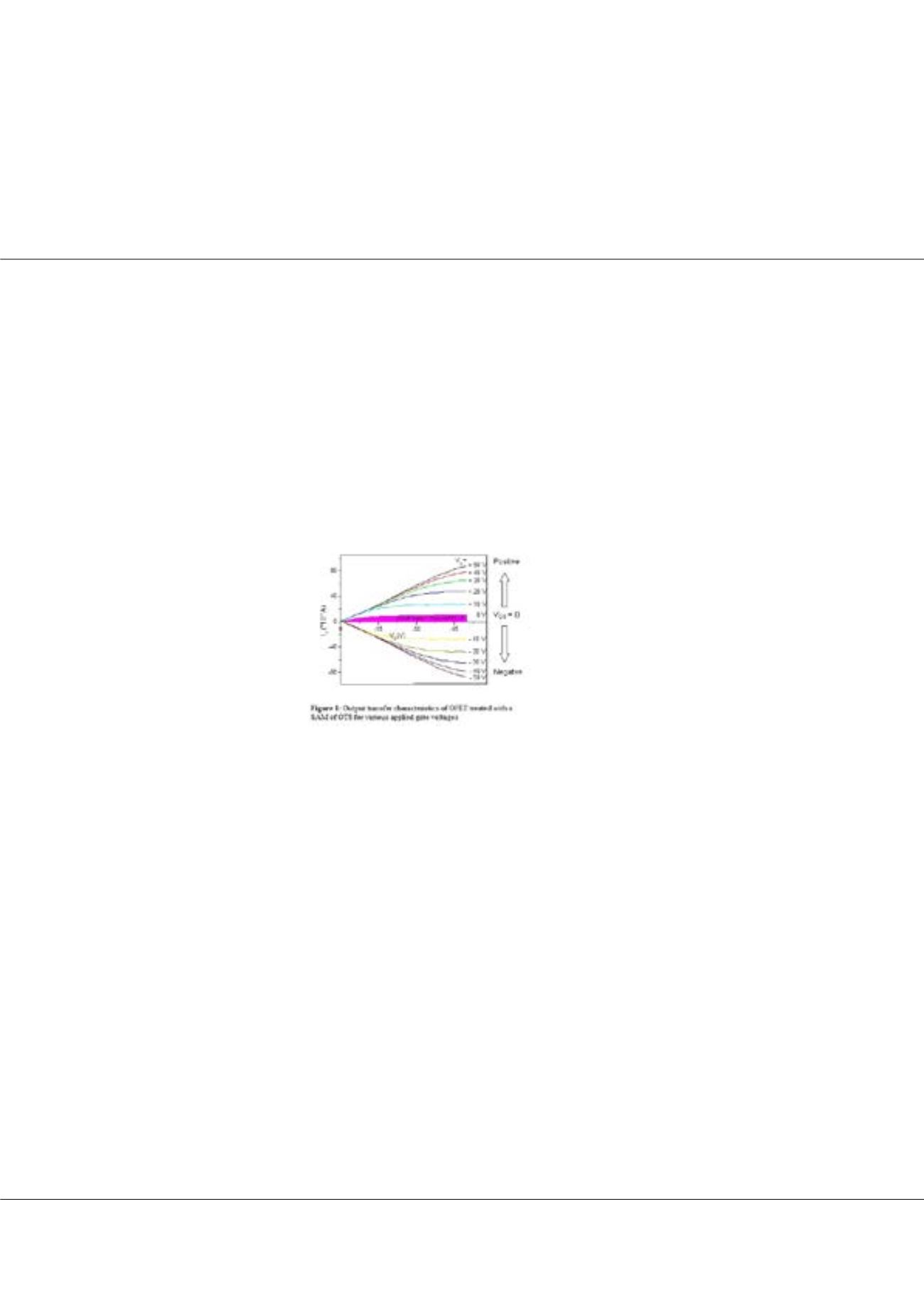

Page 41
Notes:
conferenceseries
.com
November 13-15, 2017 | Las Vegas, USA
14
th
International Conference and Exhibition on
Materials Science and Engineering
RRJOMS | Volume 5 | Issue 7 | November, 2017
Flexible organic field effect transistors with enhanced electrical properties
Davoud Dastan
Cornell University, USA
B
ottom-gate top-contact organic field effect transistors (OFET’s) have been fabricated on flexible substrates. Organic/inorganic
materials are used as gate dielectric to enhance the output and transfer characteristics of the fabricated devices. Rutile titania
nanoparticles (NP’s) were prepared using solvothermal technique and incorporated into poly vinyl alcohol (PVA) to improve the
capacitance and therefore dielectric constant of the host matrix. The composite films were exposed to ozone treatment and the gold
contacts were thermally made on top of the films through a shadow mask. The gate dielectric was treated with a self-assembled
monolayer (SAM) of octadecyltrichlorosilane (OTS) and then an active layer of copper phthalocyanine (CuPc ) was deposited on top
of the films. The output and transfer characteristics of the fabricated FET’s were measured using semiconductor parameter analyzer.
OFET’s treated with a SAM of OTS exhibited higher mobility, on-off current ratio, and lower threshold voltage than the devices
without a SAM of OTS treatment.
Biography
Davoud Dastan has his expertise in the area of materials science. His expertise in materials science includes synthesis, characterization of nanomaterials for energy appli-
cations. He has the experience of synthesizing semiconductor oxides nanoparticles and thin films, fabricating solar cells, metal-insulator-semiconductors (MIS) structures,
and organic field effect transistors using hybrid materials such as organic/inorganic materials. He has got several competitive grants during his research and has an ever
growing potential for exploring his interest in materials science and nanotechnology.
d.dastan61@yahoo.comDavoud Dastan, Res. Rev. J Mat. Sci. 2017, 5:7
DOI: 10.4172/2321-6212-C1-011
















